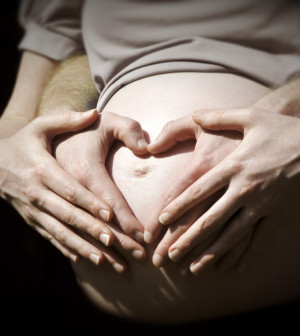- Navigating Your Midlife Crisis: Embracing New Possibilities
- City Raccoons Showing Signs of Domestication
- Mapping the Exposome: Science Broadens Focus to Environmental Disease Triggers
- One Week Less on Social Media Linked to Better Mental Health
- Your Brain Changes in Stages as You Age, Study Finds
- Some Suicide Victims Show No Typical Warning Signs, Study Finds
- ByHeart Formula Faces Lawsuits After Babies Sickened With Botulism
- Switch to Vegan Diet Could Cut Your Greenhouse Gas Emissions in Half
- Regular Bedtime Does Wonders for Blood Pressure
- Dining Alone Could Mean Worse Nutrition for Seniors
Banned PCB Chemicals Still Tied to Autism in U.S. Kids

Children exposed to relatively high levels of PCBs in the womb may have an increased risk of developing autism, a new study suggests.
PCBs, or polychlorinated biphenyls, are man-made chemicals once used in a wide range of products, from electrical appliances to fluorescent lighting.
Use of these chemicals was banned in the 1970s because of concerns about their health effects. But since they do not easily break down, PCBs still linger in the environment — and in people.
In the new study, researchers found that when pregnant women had relatively high levels of certain PCBs in their blood, their children were about 80 percent more likely to be diagnosed with autism versus other kids.
Those children also had a roughly twofold higher risk of intellectual disabilities unrelated to autism, the researchers said.
The findings don’t prove that PCBs directly raise those risks, however.
“Autism is a complex condition with many different causes, and those causes vary among individuals,” said Kristen Lyall, lead researcher on the study.
Experts believe that for children to develop autism, they have to have a genetic susceptibility and be exposed to certain environmental factors during critical periods of early brain development.
Researchers are still trying to figure out what those environmental factors are. But some suspects include prenatal exposure to poor nutrition, certain infections, heavy air pollution and pesticides, according to the non-profit Autism Speaks.
The new findings suggest that PCBs could be another one of the “puzzle pieces,” said Lyall, an assistant professor at Drexel University’s A.J. Drexel Autism Institute, in Philadelphia.
The study, published Aug. 23 in Environmental Health Perspectives, included more than 1,100 children born in Southern California between 2000 and 2003.
Overall, 545 kids had been diagnosed with an autism spectrum disorder; another 181 had an intellectual disability, but not autism. The rest — 418 in all — had neither diagnosis.
The children’s mothers had all been enrolled in a prenatal screening program, enabling the researchers to analyze blood samples taken during each woman’s second trimester.
It turned out that a mother’s levels of two particular PCBs — ones used as lubricants, coolants and insulators — were linked to her child’s risk of developing autism, the study authors said.
Women whose PCB levels were in the top 25 percent were roughly 80 percent more likely to have a child with autism, versus women in the bottom 25 percent, the researchers reported.
Lyall’s team tried to dig for other explanations. They factored in the mothers’ ages, races and weights, for instance. But PCB levels were still linked to autism risk, the investigators found.
It is, however, difficult to point the finger at any one chemical, Lyall said.
In daily life, people aren’t exposed to chemicals in isolation, she noted. Her team plans to study whether mixtures of different chemicals are related to autism risk, as well.
What’s clear, though, is that many studies have tied PCBs to ill health effects.
“We’ve known that these chemicals can have effects on the immune system and the endocrine [hormonal] system,” said Dr. Daniel Coury, medical director of Autism Speaks’ Autism Treatment Network.
“What’s concerning,” he said, “is that they are pretty ubiquitous.”
Decades after they were banned, PCBs persist in the air, soil and water. People are still exposed through food — particularly fish, meat and dairy products — and breathing PCB-contaminated air, according to the U.S. Centers for Disease Control and Prevention.
Old electrical appliances and fluorescent lighting can be sources, too.
Coury stressed that although the new study was “well done,” it does not prove that PCBs contribute to autism.
“We’d like to see if the findings can be replicated in other groups,” he said. “Do you see this same association in Nebraska? Or in France?”
It’s also important to keep the findings in perspective, Coury and Lyall said.
An 80 percent increase sounds scary. But that’s the relative increase comparing children with the highest prenatal PCB exposure against those with the lowest, Lyall pointed out.
The CDC estimates that about 1.5 percent of U.S. children have an autism spectrum disorder, Coury noted. “It’s a low risk to begin with,” he said. “So even with an 80 percent increase, it’s still low.”
Plus, the CDC says, recent studies have shown that Americans’ PCB levels are declining.
For now, Lyall said, pregnant women can take steps to reduce their PCB exposure. Trimming the fat from meat, avoiding fish from PCB-contaminated waters, and getting rid of old appliances are a few ways.
Many U.S. states have advisory systems that warn people about PCB-contaminated fish and wildlife, according to the CDC.
More information
The U.S. National Institute of Environmental Health Sciences has more on environmental factors and autism.
Source: HealthDay
Copyright © 2025 HealthDay. All rights reserved.










